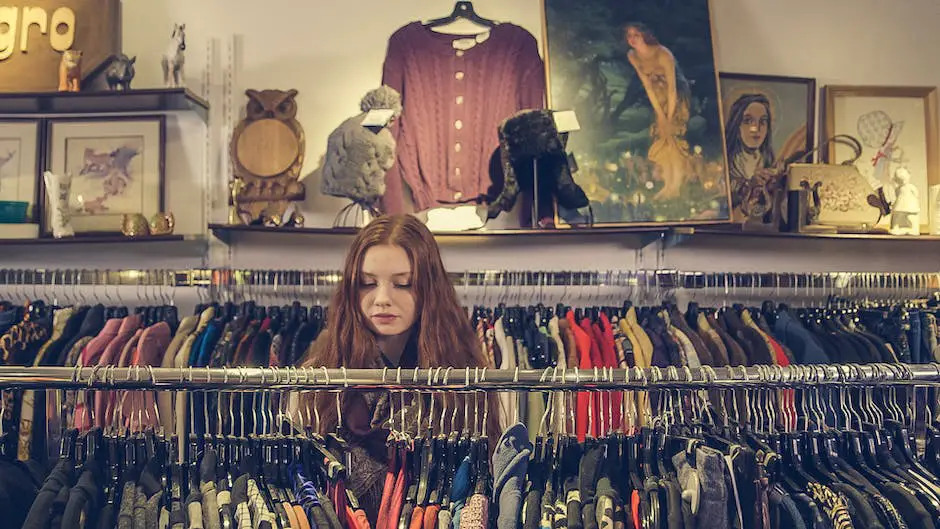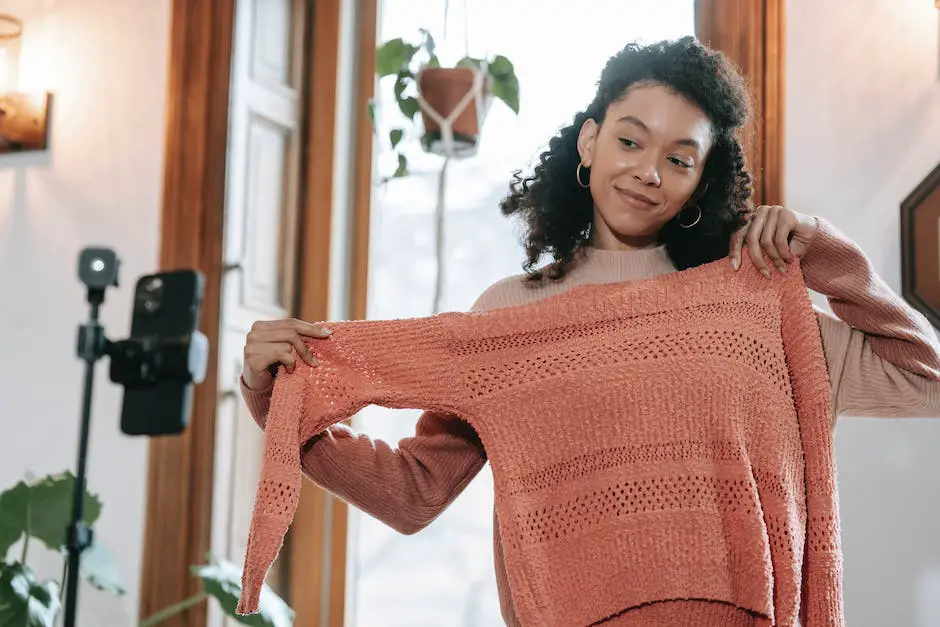The digital revolution has transformed the way we live, work, and specifically, the way we shop. Caught in a whirlwind of this transformation are the online fashion boutiques – a modern take on traditional shopping, adding ease, diversity, and global access to the fashion aficionado’s shopping experience. As we delve into the realms of these fashion platforms, we find their evolution is not only changing the face of retail but also the habits and preferences of consumers worldwide.
In our digitally connected world, these boutiques have achieved a prominent role in the fashion industry’s ongoing dynamic metamorphosis. By ushering a shift from physical to virtual shopping spaces and promising greater convenience and product variety, they have resonated deeply with the cosmopolitan consumers. Yet, as these virtual stores rise in popularity and acceptance, they also pave the way for new challenges and potential downsides.
What Are Online Fashion Boutiques?
What Are Online Fashion Boutiques?
Online fashion boutiques are digital platforms that specialize in selling a curated selection of fashion items. Just like physical boutiques, these online shops focus on a niche aspect of fashion, be it luxury apparel, indie designer pieces or vintage clothes, to name a few. These stores seek to offer a unique assortment of products that cater to a specific client base with distinct fashion preferences.
Transforming the Shopping Experience
A key defining feature of online fashion boutiques is the personalized, intimate shopping experience they aim to offer, despite the lack of physical interaction. They do this through well-curated collections, detailed product descriptions, high-quality visuals, and occasionally, interaction with customers via social media or email newsletters.
Many online fashion boutiques frequently update their product varieties, reflecting the latest trends and seasons for their loyal consumers who crave novelty and innovation. Several boutiques even go a step further to integrate augmented reality (AR) apps into their online platforms, allowing customers to visualize how items would look on them or in their space, virtually enhancing the shopping experience.
Types of Online Fashion Boutiques
The range of online fashion boutiques is wide and varies greatly, reflecting the dynamism and diversity of the fashion industry. Some focus on high-end luxury brands, offering pieces from designers such as Gucci, Prada, and Chanel. Others have a more niche focus, promoting indie or up-and-coming designers who might not yet have a global reach.
Then there are online boutiques that highlight vintage or second-hand fashion, with the sustainable fashion movement gaining significant traction. These boutiques give old pieces a new life, promote ethical consumption, and offer shoppers unique, one-of-a-kind pieces that are not mass-produced.
The Shift from Physical to Virtual Boutiques
The transition from physical to virtual boutiques is a natural progression in our increasingly digital world. Convenience is a major driving factor, as online shopping allows customers to shop anytime, anywhere. Compilation of vast inventories online also mean customers have a wider selection, without the spatial limitations of a physical store.
In recent years, the improvements in secure payment systems and reliable logistics networks have contributed to the growth and success of online fashion boutiques. With these advancements, customers can enjoy seamless and secure transactions, and expect timely delivery of their purchases, thereby fostering trust and encouraging repeat patronage to these online stores.
The rise of mobile technology, particularly smartphones and tablets, allows for even greater accessibility to online fashion boutiques. As a result, these boutiques are focusing increasingly on mobile-friendly websites or even proprietary apps to better cater to the changing consumer behavior and expectations.
Although there are shifts in the landscape of fashion retail, it must be acknowledged that physical boutiques still possess their unique allure.
The physical act of touching, trying, and purchasing fashion items cannot be wholly mirrored by online experiences. The evolution of fashion retail might enhance this experience by successfully combining the merits of both traditional and online boutiques.

Benefits and Advantages of Online Fashion Boutiques
Why Online Fashion Boutiques are Beneficial and Advantageous
With the continued expansion of e-commerce, online fashion boutiques have become a favorite shopping destination for many. This rise in preference is hardly surprising, given the manifold benefits and advantages of shopping online. These include the comfort of shopping from anywhere, a broader range of products, ease of price comparison, and more inclusivity in sizes and styles.
Convenience of Shopping at Home
One of the major draws of online fashion boutiques is the convenience factor that it provides. From the comfort of your own home, you can browse through an extensive array of items without the hassle of in-store shopping experiences such as driving to a location, going through crowded aisles, or waiting in long checkout lines. With just a few clicks, you can shop around the clock at any time that suits your schedule, whether it’s during your lunch break, in the middle of the night, or during your weekend downtime.
Wider Product Range and Easy Price Comparisons
Online fashion boutiques often encompass a much broader array of products than what typically fits in a physical store. This greater range of options enables customers to find niche or unique pieces that may not be available in their local shopping centers. Added to this is the ability to easily compare prices and items across different boutique stores without leaving your house. As a result, consumers can make informed decisions and find the best deals, saving valuable time and money.
Inclusivity in Sizes and Styles
Online fashion boutiques offer a more diverse and inclusive catalog of styles, colors, and sizes. Given that physical stores have limited space, they often prioritize stocking items in conventional sizes and trending styles. By contrast, online boutiques can offer a wide variety of items to cater to a broader consumer base. Whether you’re petite, plus-sized, tall, or seeking a rare style, online fashion boutiques give you the opportunity to find the perfect fit and express your unique sense of style.
Use of Augmented Reality
Technological advances have also enhanced the experience of online shopping with the integration of augmented reality (AR) in some fashion boutiques. This innovative technology allows customers to virtually ‘try on’ clothes and accessories, giving an improved sense of how the items would look on them. This can increase customer confidence in their purchases and reduce the likelihood of returns, making online shopping even more convenient and efficient.
Online fashion boutiques are becoming increasingly popular due to their unique offerings and advantages over traditional physical stores. Leveraging the power of technology and consumer desires for variety and convenience, these digital platforms are reshaping the fashion shopping landscape by catering to a wide range of style sensibilities and sizing needs.

Challenges and Drawbacks of Online Fashion Boutiques
Recognizing the Challenges in the Online Fashion Boutique Industry
Despite the surge in the popularity of online shopping, and the undeniable allure of browsing, comparing, and buying apparel from the comfort of one’s own home, we must recognize that online fashion boutiques come with their own set of challenges and downsides. These include the inability to try on clothes prior to purchase, potential security threats, and occasionally rigid return policies.
Inability to Try Items On Before Buying
One of the main risks consumers take when shopping for clothes online is not being able to try items on before making a purchase. Size charts and digital measurements are helpful tools, but they can not capture the actual fit and feel of a garment on the individual’s body. In addition, factors like different body shapes and varying measurement standards across brands can make online shopping tricky and sometimes frustrating.
A potential solution for this challenge is the use of virtual fitting rooms. For example, some online fashion boutiques are now offering augmented reality features on their websites and mobile apps. These digital tools allow customers to upload images of themselves and virtually ‘try on’ garments for a better sense of how they might fit.
Security Issues and Concerns
Another significant concern for many consumers is the security of online transactions. Buyers need to provide personal and financial information such as credit card details, addresses, and emails. This makes online fashion boutiques a potential target for cybercriminals looking to steal such information.
Various strategies can be deployed to mitigate these concerns. Fashion boutiques can invest in robust and reliable security software that encrypts users’ information, making it more difficult for cybercriminals to access. Additionally, they can educate their customers on safe online shopping practices, emphasizing the importance of secure passwords and authenticated payment portals.
Infrequent Return Policies
While the advantages of online shopping are many, one drawback is the often complicated and inflexible return policy. Some online boutiques do not accept returns or exchanges, while others may charge restocking fees or provide store credit only, making it difficult for dissatisfied customers to recoup their money.
To overcome these issues, online boutiques can offer easy and hassle-free returns, clearly outlining their return policy on their website. They might consider providing prepaid return labels, allowing refunds in the original method of payment, and ensuring timely processing of returns, which would increase consumer trust and confidence and eventually, customer loyalty.
In Conclusion
When it comes to online fashion boutiques, a number of hurdles can arise. However, with the aid of modern technology and outstanding customer service, these challenges are not insurmountable. Implementing such solutions not only enhances the consumer’s shopping experience but also provides substantial benefits to the boutiques. This often includes a boost in brand recognition, an increase in customer loyalty, and ultimately, an escalation in sales.

Noteworthy Online Fashion Boutiques to Check Out
1. Net-A-Porter: The Epitome of High-End Fashion
Net-A-Porter, established in 2000 by Natalie Massenet, has since grown to be a leader in upscale women’s fashion, boasting a roster of over 800 designers such as Gucci and Givenchy. As an early trailblazer in the realm of online luxury retail, Net-A-Porter has successfully integrated editorial content and e-commerce, uniting both the enjoyment of reading and shopping. The company promotes sustainable fashion through its Net Sustain collection, nudging customers towards responsible shopping. This collection features numerous products that fulfil strict criteria concerning labor rights, animal welfare, and environmental considerations.
2. ASOS: Accessible and Influencer-Friendly Trend
UK-based ASOS, which stands for ‘As Seen On Screen,’ began in 2000 and has been a game-changer in affordable, trend-led fashion. Catering to women and men, with a broad size range including plus size, Tall, Petite, and Maternity needs, ASOS thrives with its wide variety across all clothing categories. ASOS champions inclusivity and diversity with a range of models across races, body types, and sizes. Moreover, its online marketplace provides a platform for independent designers to sell vintage and handmade items directly to consumers.
3. Reformation: Sustainable and Eco-Conscious Chic
Reformation, founded in 2009 by Yael Aflalo, is synonymous with sustainable fashion. This Los Angeles-based label has a clear commitment to being eco-friendly throughout design, production, and delivery processes. Its biggest selling point is the perfect blend of trend-consciousness with its robust sustainability practices. Reformation transparently shares ‘RefScale,’ which measures the environmental footprint from growing raw materials, dyeing, manufacturing, packaging to transportation, allowing customers to view the environmental impact of each item.
4. Moda Operandi: Runway Fashion at Your Fingertips
Moda Operandi offers a unique spin to the online fashion boutique game. Established in 2010, the site allows you to preorder looks straight from the runway through their Trunkshow feature. Moda Operandi presents a curated collection of leading designers and emerging talents, specializing in high-fashion pieces that would typically only be available to the industry insiders. It also provides a personal stylist service to help guide luxury purchases, offering a tailored, VIP experience for its customers.
5. Shopbop: Multi-Brand Retailer with Style
Being a web-only retailer from its inception in 2000, Shopbop curates a wide selection of top women’s fashion brands, ranging from established designers to new fashion-forward labels. Now part of the Amazon empire, Shopbop continues to charm fashion enthusiasts with its easy navigation, extensive product range, and fast shipping. Its well-edited selection of trend and staple pieces, coupled with an easy mechanism for returns and size guides, makes for a straightforward, efficient shopping experience.
6. Everlane: The Epitome of Transparent Basics
Everlane has made its mark in the world of fashion e-commerce by taking ‘radical transparency’ to heart. Established in 2011, Everlane’s core pillars are ethical manufacturing, clear-cut pricing, and solid, high quality basics. They guarantee that their merchandise is produced in factories that employ fair labor practices and they offer their products directly to the consumer, thereby sidestepping the need for traditional retail markups. Each product’s webpage breaks down the costs involved in its materials, labor, and transport, while also accounting for Everlane’s profit. In essence, what truly differentiates Everlane is its forthright approach in making consumers completely aware of where exactly their money is being applied.

The Future of Online Fashion Boutiques
Virtual Fashion Shows and Digital Collections: The Future of Online Boutiques
As we look forward, it’s foreseen that online fashion boutiques will leverage cutting edge technology to host virtual fashion shows, debuting their fresh styles and products to clientele worldwide. This paradigm shift was expedited by the COVID-19 pandemic, during which time traditional physical gatherings became unfeasible, propelling digital solutions into the limelight as successful alternatives.
These virtual fashion shows offer consumers an immersive, interactive experience, allowing them to virtually explore garments from numerous angles. These virtual experiences are accessible by anyone worldwide, providing online fashion boutiques a powerful platform to reach an international market. Furthermore, designers are gradually shifting towards creating digital clothing collections, thus ushering in a novel dimension within the online fashion industry.
AI and Machine Learning in Size Recommendations
Another anticipated trend in the online fashion boutique industry is the use of artificial intelligence (AI) and machine learning for size recommendations. Often, online shoppers find it difficult to get the right size, leading to dissatisfaction and product returns. To mitigate this issue, many online fashion boutiques are integrating AI systems that can provide accurate size recommendations based on the customer’s previous purchases, their measurements or by comparing with sizes from different brands they have shopped from in the past.
This technology aims to provide a personalized shopping experience and reduce the likelihood of returns and exchanges. Apart from improving customer satisfaction, it also significantly reduces the costs associated with reverse logistics for the retailers.
Sustainable Fashion and Ethical Practices
The fashion industry has historically been criticized for its unsustainable practices and negative environmental impact. The online fashion boutique industry is not immune to these criticisms. However, as more people become aware of the ecological footprint of the fashion industry, there has been a surge in popularity for sustainable fashion.
This has led to the emergence of online fashion boutiques that focus solely on sustainable and ethically made clothing. These fashion boutiques prioritize transparency in their supply chain, the use of environmentally friendly materials, and give back to the community through various initiatives.
It’s also worth mentioning that the younger generation – millennials and Gen Z – are leading the demand for sustainability in fashion. To cater to this demand, more online fashion boutiques are expected to incorporate sustainability into their business models – whether through offering sustainable products, using green packaging, or offsetting carbon emissions.
In conclusion
The online fashion boutique industry is predicted to be influenced greatly by digital innovations, increased sustainability awareness, and the desire for personalized shopping experiences. As the industry progresses, it’s also likely that more new trends and advancements will emerge, further transforming and shaping the future of online fashion boutiques.

As we stand on the threshold of an era marked with technological advancements and sustainable innovations, the online fashion boutique industry continues to show extraordinary promise and potential for growth. It presents itself as a space where creativity, business, and technological innovation intersect, forging a pathway for the future. Emerging trends like virtual fashion shows, AI-informed size recommendations, and sustainability-focused practices just add to the scope and dynamics of this domain.
We live in exciting times where fashion is not just confined to physical stores or runways, but is constantly evolving and making trends more accessible to anyone with an internet connection. Serving as the perfect example of the internet’s democratizing influence, online fashion boutiques have shifted the fashion paradigm, redefining the available styles, and who can access them.
The future of fashion is undoubtedly online, and the front-runners of this evolution are the myriad of diverse and creative online fashion boutiques.



